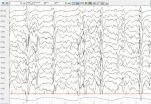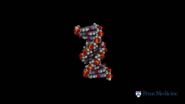(Press-News.org) The most comprehensive family tree of meat-eating dinosaurs ever created is enabling scientists to discover key details of how birds evolved from them.
The study has shown that the familiar anatomical features of birds – such as feathers, wings and wishbones – all first evolved piecemeal in their dinosaur ancestors over tens of millions of years.
However, once a fully functioning bird body shape was complete, an evolutionary explosion began, causing a rapid increase in the rate at which birds evolved. This led eventually to the thousands of avian species that we know today.
A team of researchers, led by the University of Edinburgh, examined the evolutionary links between ancient birds and their closest dinosaur relatives. They did this by analysing the anatomical make-up of more than 850 body features in 150 extinct species, and used statistical techniques to analyse their findings and assemble a detailed family tree.
Based on their findings from fossil records, researchers say the emergence of birds some 150 million years ago was a gradual process, as some dinosaurs became ever-more bird-like over time. This makes it very difficult to draw a dividing line on the family tree between dinosaurs and birds.
Findings from the study support a controversial theory proposed in the 1940s that the emergence of new body shapes in groups of species could result in a surge in their evolution.
Dr Steve Brusatte, of the University of Edinburgh's School of GeoSciences, who led the study, said: "There was no moment in time when a dinosaur became a bird, and there is no single missing link between them. What we think of as the classic bird skeleton was pieced together gradually over tens of millions of years. Once it came together fully, it unlocked great evolutionary potential that allowed birds to evolve at a super-charged rate."
Dr Graeme Lloyd, of the University of Oxford, said: "Our study adds to a growing number of works that approach this problem from different angles, but all seem to confirm that the origin of birds was a truly special event in Earth history. It is particularly cool that it is evidence from the fossil record that shows how an oddball offshoot of the dinosaurs paved the way for the spectacular variety of bird species we see today."
INFORMATION:
The study is published in the journal Current Biology. The work was supported by the European Commission, National Science Foundation, University of Edinburgh, Columbia University, American Museum of Natural History and the Swarthmore College's Research Fund and James Michener Faculty Fellowship.
Dinosaur family tree gives fresh insight into rapid rise of birds
2014-09-25
ELSE PRESS RELEASES FROM THIS DATE:
Strategic or random? How the brain chooses
2014-09-25
Many of the choices we make are informed by experiences we've had in the past. But occasionally we're better off abandoning those lessons and exploring a new situation unfettered by past experiences. Scientists at the Howard Hughes Medical Institute's Janelia Research Campus have shown that the brain can temporarily disconnect information about past experience from decision-making circuits, thereby triggering random behavior.
In the study, rats playing a game for a food reward usually acted strategically, but switched to random behavior when they confronted a particularly ...
New protein players found in key disease-related metabolic pathway
2014-09-25
CAMBRIDGE, Mass. (September 25, 2014) – To coordinate their size and growth with current environmental conditions, cells rely on the mechanistic target of rapamycin complex 1 (mTORC1) pathway, which senses cellular stresses, growth factors, and the availability of nutrients, such as amino acids and glucose.
For years, Whitehead Institute Member David Sabatini and his lab have been teasing apart the numerous proteins involved in this vital metabolic pathway, in part because mTORC1 function is known to be deregulated in a variety of diseases, including diabetes, epilepsy, ...
Large study pinpoints synapse genes with major roles in severe childhood epilepsies
2014-09-25
An international research team has identified gene mutations causing severe, difficult-to-treat forms of childhood epilepsy. Many of the mutations disrupt functioning in the synapse, the highly dynamic junction at which nerve cells communicate with one another.
"This research represents a paradigm shift in epilepsy research, giving us a new target on which to focus treatment strategies," said pediatric neurologist Dennis Dlugos, M.D., director of the Pediatric Regional Epilepsy Program at The Children's Hospital of Philadelphia, and a study co-author. "There is tremendous ...
Protein controlling gut's protective force field identified
2014-09-25
Scientists have identified a protein in the human intestine that helps to protect against attack from opportunistic bacteria that strike when our defences are down. The protein receptor is activated during illness, producing a force field on the gut's surface made of a sugary substance that encourages the growth of protective bacteria.
Scientists deleted the IL-22RA1 gene that produces the receptor protein from the mouse genome. In the absence of this gene, which is associated with inflammatory bowel disease (IBD) in humans, the mice were found to be more susceptible ...
NYU Langone scientists identify key factor that maintains stem cell identity
2014-09-25
NEW YORK, September 25, 2014— A protein implicated in several cancers appears to play a pivotal role in keeping stem cells in an immature "pluripotent" state, according to a new study by NYU Langone Medical Center scientists. The study is published online today in Cell Reports.
Stem cells are the perpetual adolescents of the cellular world, uncommitted to any cell fate. In principle, they can be programmed to differentiate into any mature cell type, holding the promise of regenerating tissues and organs. A fuller understanding of their biology, however, is needed. ...
Surprising diversity of antibody family provides clues for HIV vaccine design
2014-09-25
LA JOLLA, CA—September 25, 2014—Scientists at The Scripps Research Institute (TSRI) have described how a single family of antibodies that broadly neutralizes different strains of HIV has evolved remarkably diverse structures to attack a vulnerable site on the virus. The findings provide clues for the design of a future HIV vaccine.
"In a sense, this antibody family takes more than one shot on goal in order to hit divergent forms of HIV," said Ian A. Wilson, the Hansen Professor of Structural Biology and member of the Skaggs Institute for Chemical Biology at TSRI.
"The ...
New genes identified with key role in the development of severe childhood epilepsies
2014-09-25
In the largest collaborative study so far, an international team of researchers, including scientists from VIB and Antwerp University identified novel causes for severe childhood epilepsies. The researchers analyzed the genetic information of 356 patients and their parents. In their analysis, the research teams looked for genes that had acquired new mutations in the children with severe epilepsies when compared to the DNA of the parents. In total, they identified 429 new mutations and in 12% of children, these mutations were considered unequivocally causative for the patient's ...
How the ends of chromosomes are maintained for cancer cell immortality
2014-09-25
VIDEO:
The perpetual proliferation of cancer cells requires a means to maintain telomere length. Alternative lengthening of telomeres (ALT) is a poorly understood mechanism of telomere maintenance that is utilized by...
Click here for more information.
PHILADELPHIA – Maintaining the ends of chromosomes, called telomeres, is a requisite feature of cells that are able to continuously divide and also a hallmark of human cancer. "Telomeres are much like the plastic cap on the ends ...
USC researchers discover dual purpose of cancer drug in regulating expression of genes
2014-09-25
LOS ANGELES — Keck Medicine of USC scientists have discovered new clues about a drug instrumental in treating a certain blood cancer that may provide important targets for researchers searching for cures.
The team investigated whether demethylation of gene bodies induced by the drug 5-Aza-CdR (decitabine), which is used to treat pre-leukemia, could alter gene expression and possibly be a therapeutic target in cancer.
"When we put the drug in cancer cells, we found it not only reactivated some tumor suppressor genes, but it down-regulated the overexpressed oncogene ...
NASA-NOAA's Suomi NPP satellite sees Tropical Storm Kammuri coming together
2014-09-25
When NASA-NOAA Suomi NPP satellite passed over Tropical Storm Kammuri the VIIRS instrument aboard took a visible picture of the storm that showed bands of thunderstorms wrapped around its center. The storm appears to be coming together as circulation improves and bands of thunderstorms have been wrapping into the low-level center of circulation.
NASA-NOAA's Suomi NPP satellite passed over Tropical Storm Kammuri on Sept. 25 at 03:13 UTC (Sept. 24 at 11:13 p.m. EDT) and the Visible Infrared Imaging Radiometer Suite (VIIRS) instrument aboard captured a visible picture of ...




